Midrange horn and tweeter upgrades
The biggest improvement in the sound quality of the Klipsch Heritage series is to replace the stock K400 or K500 midrange "squawker" horn with a better one. At this time the choices are very limited. I know of only two good options. The first, if you are up to some woodworking, is the
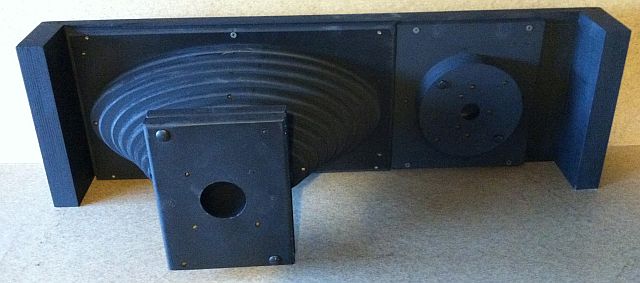 Enlarge
The picture at the left shows the finished Eliptrac 400 horn kit installed in a frame for the Klipschorn. The frame must be constructed to allow the tweeter to be mounted alongside the horn.
Enlarge
The picture at the left shows the finished Eliptrac 400 horn kit installed in a frame for the Klipschorn. The frame must be constructed to allow the tweeter to be mounted alongside the horn. 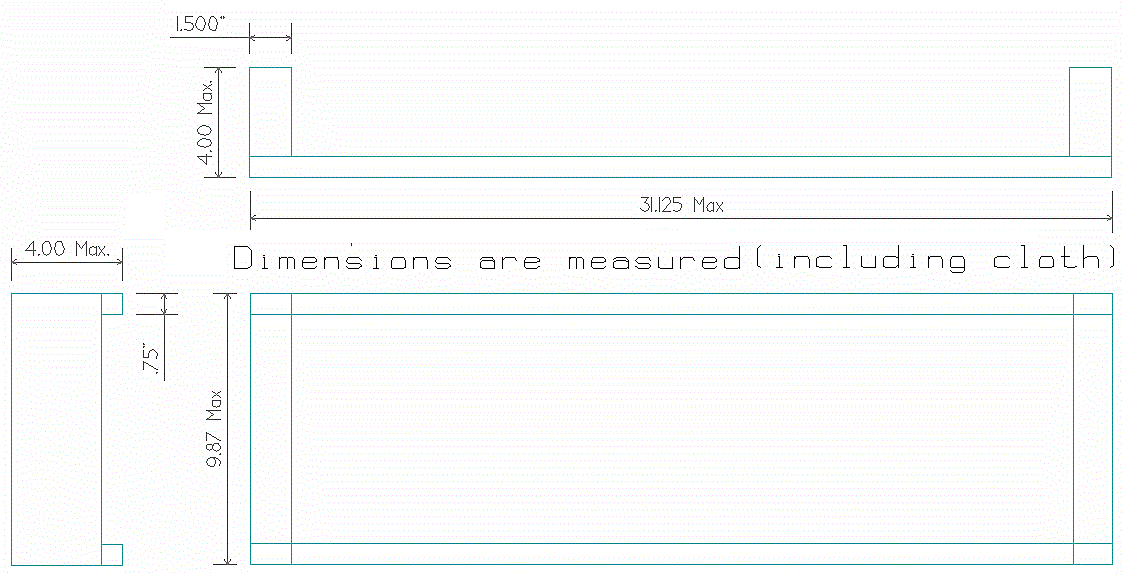 Enlarge
Enlarge
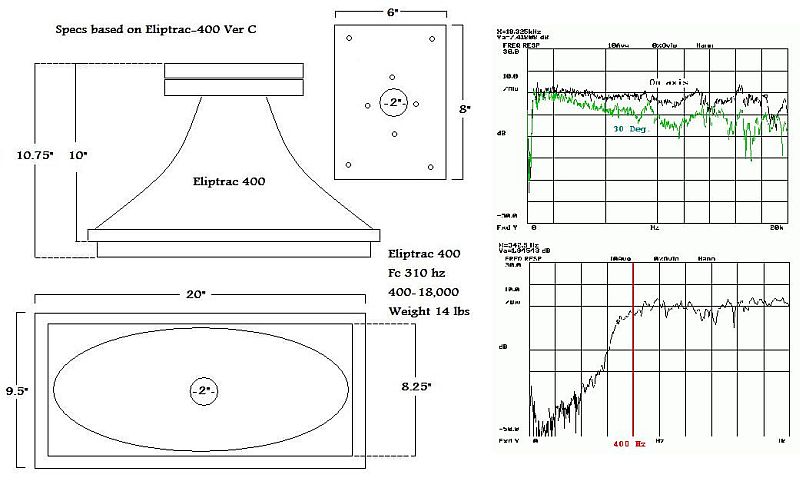
The horn kit comes like this:
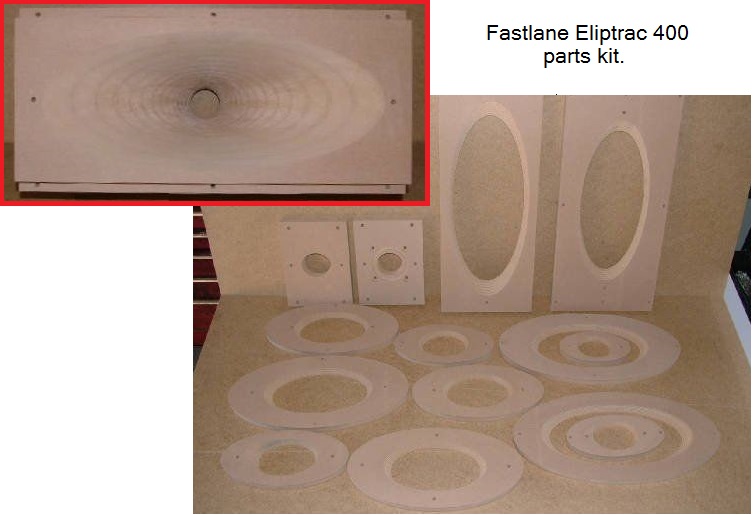
 Here are the actual assembly instructions for the kit.
Here are the actual assembly instructions for the kit.
Email Dave at:
fastlaneaudio@aol.com for pricing and to order.
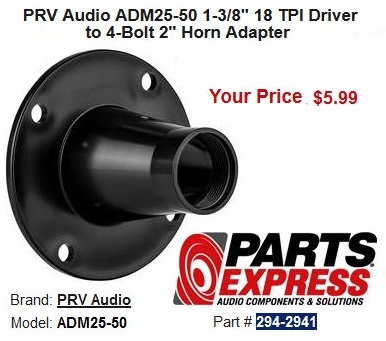
The Eliptrac 400 is a 2-Inch horn. This adaptor from Parts Express will allow the stock K55 driver to be used.
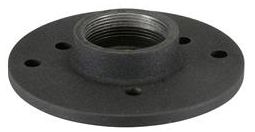
The venerable old Altec 811b and 511b "Voice of the Theater" horns are no longer made but can be found on eBay. These are 1-inch horns and will require an inexpensive adaptor to use the Klipsch K55V squawker driver.
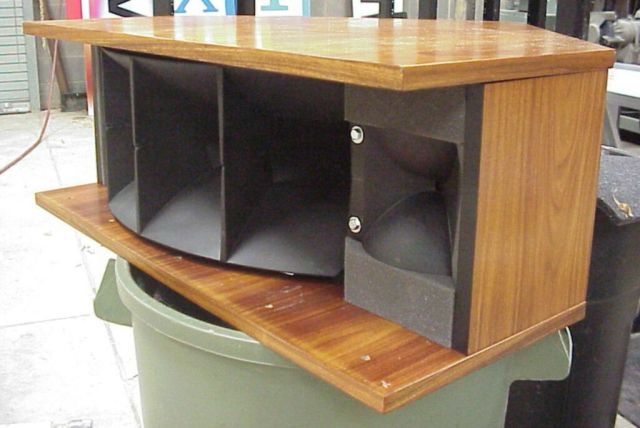 511B
511B
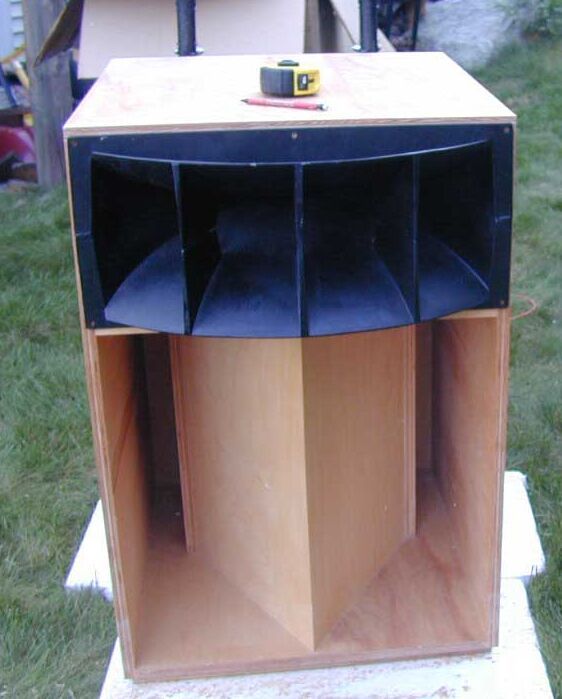 511B
511B
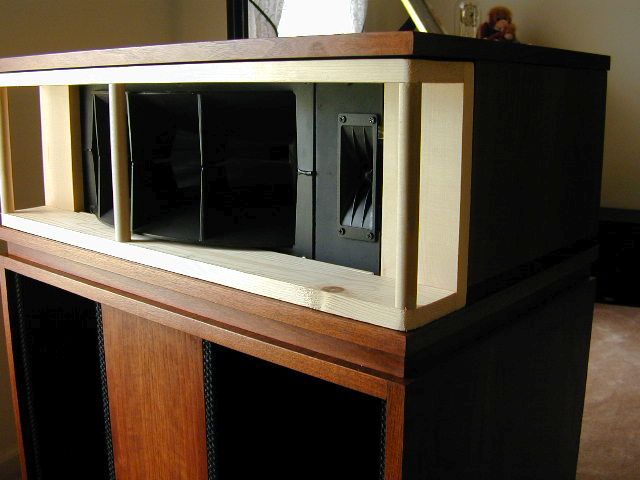 811B
811B
The least expensive option is to add damping material to the OUTSIDE of the midrange horn. You wouldn't think this would make any difference, but it DOES! The material is stick on asphalt sheets available from automotive parts stores like Pep Boys or AutoZone. The best known brand is called Dynamat. It helps on any horn, even the Altec VOT horns.

The Edgar horns sound much better then the stock Klipsch squawker horns.
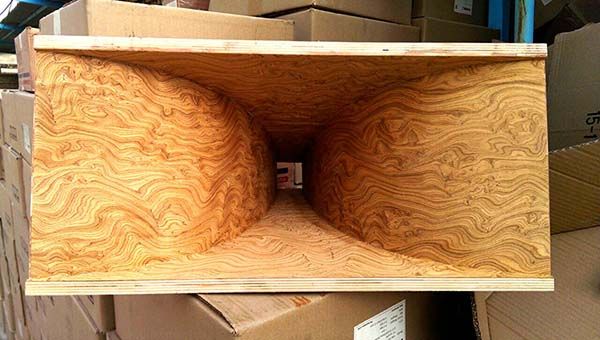
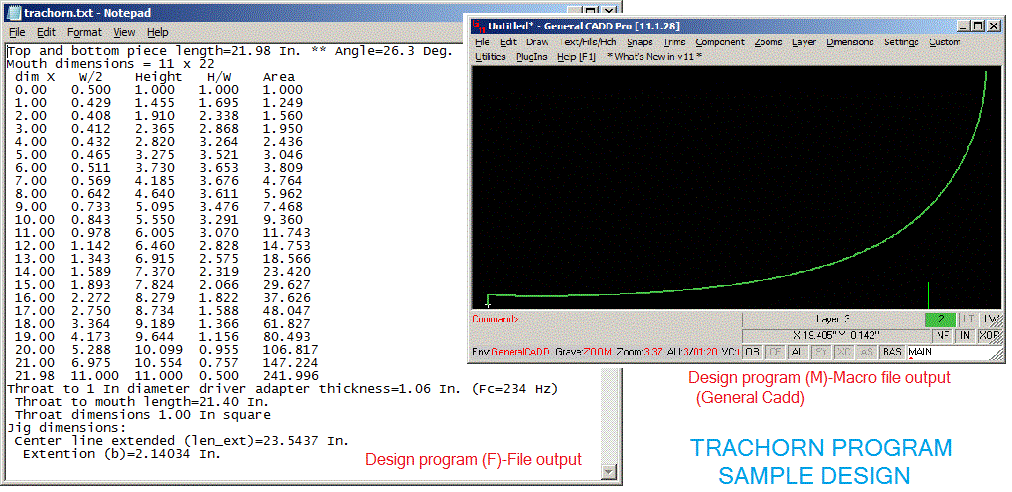

The program is a Windows "console" program that will run on any version of Windows by simply double-clicking on it from Windows explorer. You can download it here:
 TRACHORN.EXE, Version 1.8b for 32 or 64 bit
TRACHORN.EXE, Version 1.8b for 32 or 64 bit
Trachorn.exe program has several command line options.
- Enter a new length in Inches to see the effect on the horn throat. It's not good for anything practical as you want a perfectly square throat.
-
(S)-Square adjusts the length to return to a square throat. -
(F)-File generates a text file (trachorn.txt) that tabulates thedimension X and W/2 dimensions describing the curved sides and dimensions required to make the assembly jig. -
(M)-Macro will generate a macro file for either (A)-AutoCADD or (G)-General cad to make a precise template of the curved sides. -
(Enter) will exit the program.
With thanks to
For the nerds among us, here's the math involved:
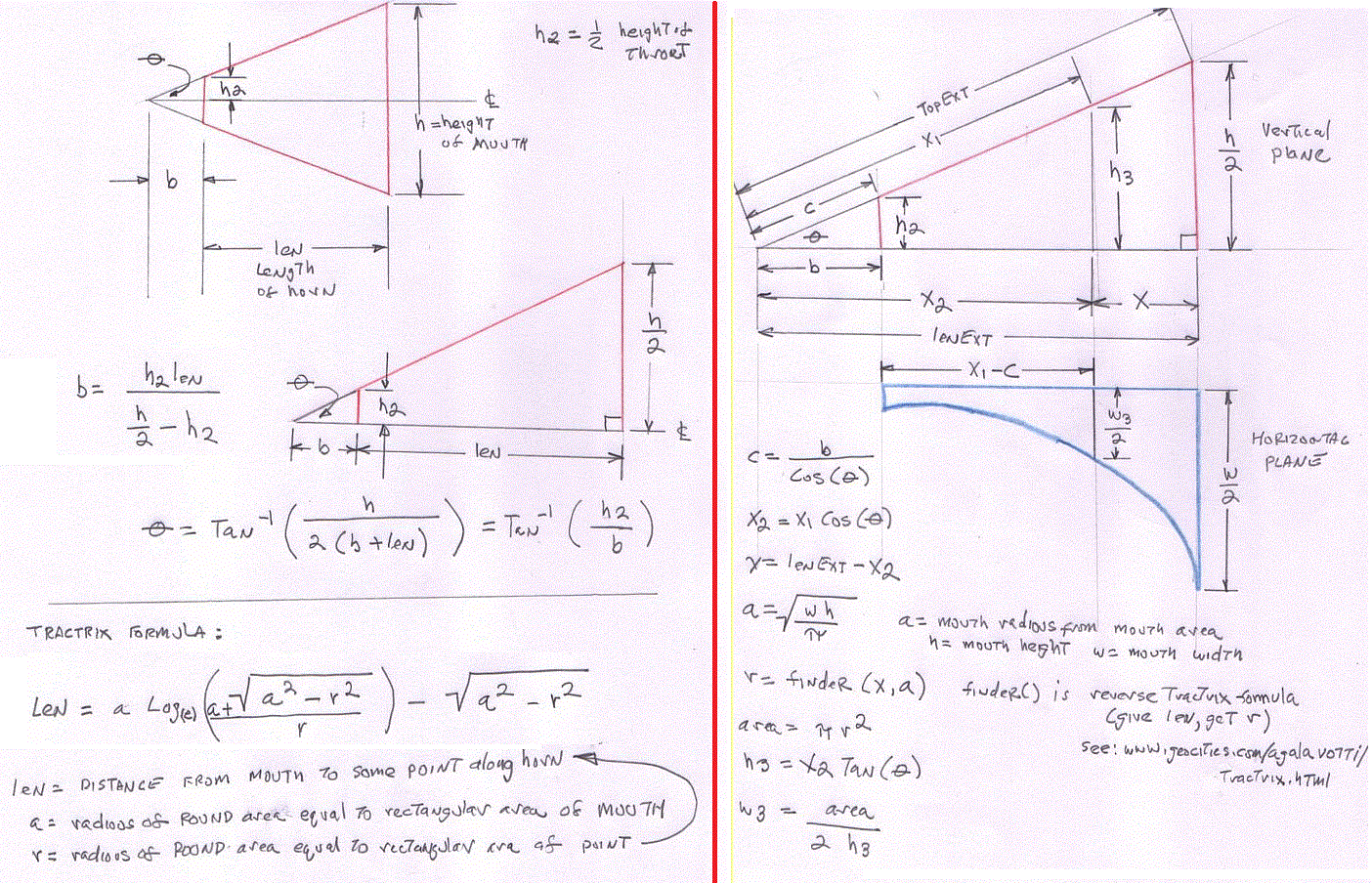 Enlarge
Enlarge